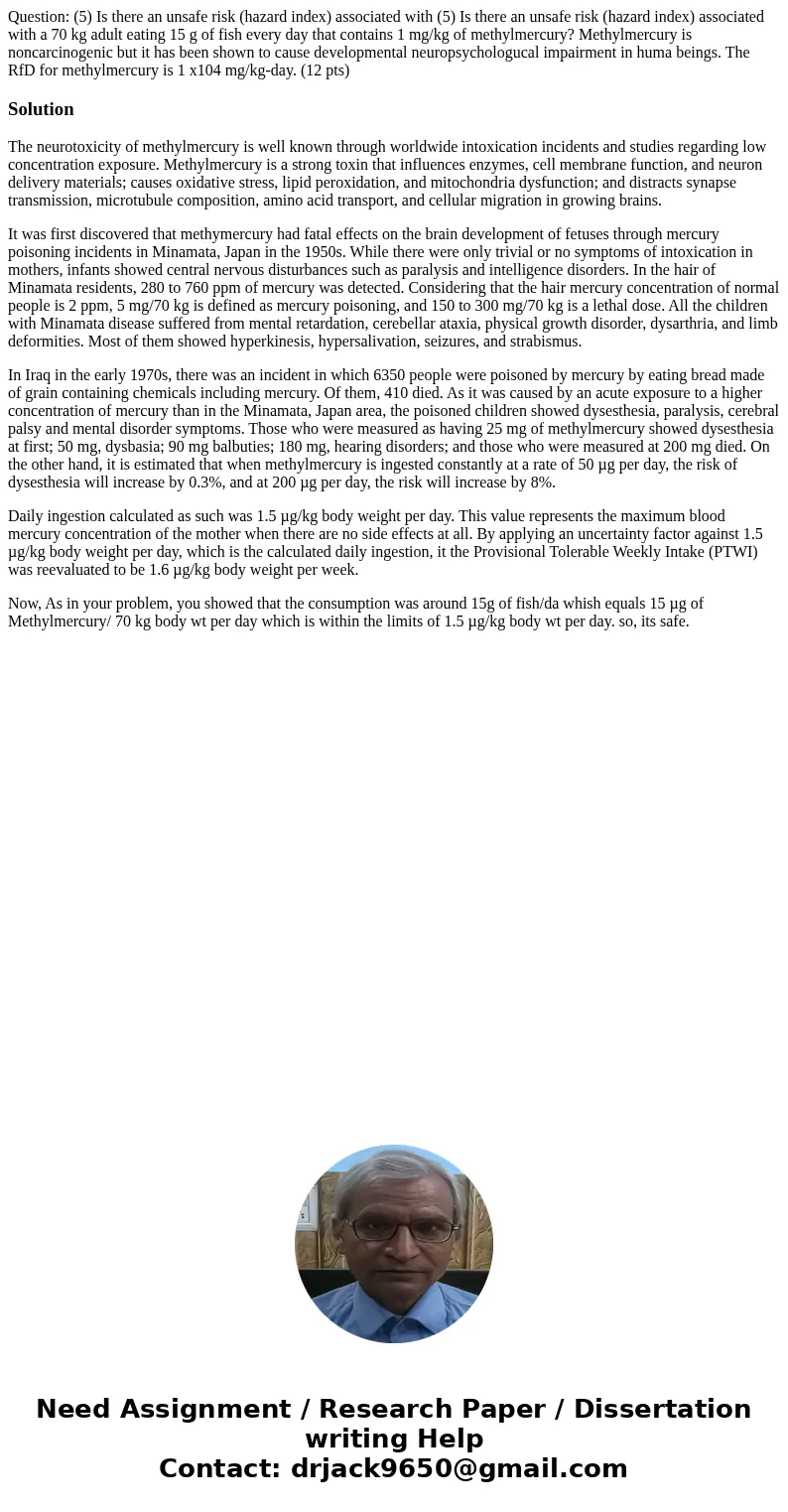Question 5 Is there an unsafe risk hazard index associated w
Solution
The neurotoxicity of methylmercury is well known through worldwide intoxication incidents and studies regarding low concentration exposure. Methylmercury is a strong toxin that influences enzymes, cell membrane function, and neuron delivery materials; causes oxidative stress, lipid peroxidation, and mitochondria dysfunction; and distracts synapse transmission, microtubule composition, amino acid transport, and cellular migration in growing brains.
It was first discovered that methymercury had fatal effects on the brain development of fetuses through mercury poisoning incidents in Minamata, Japan in the 1950s. While there were only trivial or no symptoms of intoxication in mothers, infants showed central nervous disturbances such as paralysis and intelligence disorders. In the hair of Minamata residents, 280 to 760 ppm of mercury was detected. Considering that the hair mercury concentration of normal people is 2 ppm, 5 mg/70 kg is defined as mercury poisoning, and 150 to 300 mg/70 kg is a lethal dose. All the children with Minamata disease suffered from mental retardation, cerebellar ataxia, physical growth disorder, dysarthria, and limb deformities. Most of them showed hyperkinesis, hypersalivation, seizures, and strabismus.
In Iraq in the early 1970s, there was an incident in which 6350 people were poisoned by mercury by eating bread made of grain containing chemicals including mercury. Of them, 410 died. As it was caused by an acute exposure to a higher concentration of mercury than in the Minamata, Japan area, the poisoned children showed dysesthesia, paralysis, cerebral palsy and mental disorder symptoms. Those who were measured as having 25 mg of methylmercury showed dysesthesia at first; 50 mg, dysbasia; 90 mg balbuties; 180 mg, hearing disorders; and those who were measured at 200 mg died. On the other hand, it is estimated that when methylmercury is ingested constantly at a rate of 50 µg per day, the risk of dysesthesia will increase by 0.3%, and at 200 µg per day, the risk will increase by 8%.
Daily ingestion calculated as such was 1.5 µg/kg body weight per day. This value represents the maximum blood mercury concentration of the mother when there are no side effects at all. By applying an uncertainty factor against 1.5 µg/kg body weight per day, which is the calculated daily ingestion, it the Provisional Tolerable Weekly Intake (PTWI) was reevaluated to be 1.6 µg/kg body weight per week.
Now, As in your problem, you showed that the consumption was around 15g of fish/da whish equals 15 µg of Methylmercury/ 70 kg body wt per day which is within the limits of 1.5 µg/kg body wt per day. so, its safe.

 Homework Sourse
Homework Sourse